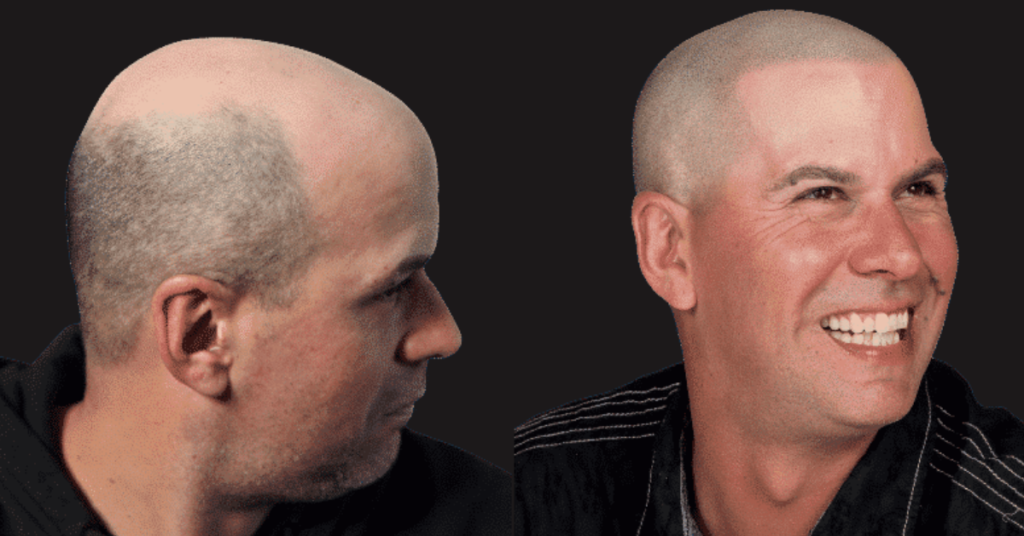What is male pattern hair loss?
Male pattern hair loss (MPHL) is the most common type of hair loss in men.
Baldness appears gradually on the crown of the scalp or as a receding hairline at the frontal and thinning of hair over temple areas.
It affects about 30% of men by the age of 30 and 50% of men over the age of 50.
Causes of male pattern baldness?
Both genetic and hormonal factors are responsible.
Inherited from one or both parents
Testosterone is naturally converted in the body to dihydrotestosterone (DHT) which causes a change in the hair follicles on the scalp. Increased levels of DHT have been found in the balding scalp.
The hairs become progressively smaller in diameter, shorter in length, and lighter in color until eventually the follicles shrink completely and stop producing hair.
Clinical features
A receding frontal hairline is a usual pattern and there may be loss of hair from the top of the head.
Hairs in the affected areas are thin and short before they become absent.
Men become aware of scalp hair loss or a receding hairline at any time after puberty but most of them become aware of it as they approach their thirties
Treatment
Male pattern baldness is progressive and it does not improve or reverse without treatment.
Minoxidil and Finasteride are commonly prescribed medications that may restore the hair to some extent
Minoxidil solution may cause an initial hair fall in the first 2-8 weeks of treatment, and this usually subsides when the new hairs start to grow. At least 6 months of application is required to notice any benefit. Minoxidil can cause reactions such as dryness, redness, scaling, and/or itchiness at the site of application and should not be applied if there are cuts or open wounds. It is applied to the affected scalp (not the hair) using a dropper or pump spray device and should be spread over the affected area lightly
Finasteride tablets reduce levels of DHT (hormone), which may slow hair loss and possibly help the regrowth of hair.it takes 3 -6 months.
Female pattern hair loss (FPHL) is the most common type of hair loss seen in women usually occurring in the 40-60s years of age
Female pattern hair loss is due to genetic and hormonal factors.
There is gradual thinning of scalp hair at the center and increased shedding.
May be associated with conditions in which androgen (a group of hormones) levels are elevated such as polycystic ovarian disease.
Clinical features
There is widespread thinning of the hair, mainly on the crown of the scalp.
It may initially start as widening of the hair parting areas. In females, the hairline at the front of the scalp often remains normal unlike in men where receding of frontal hair line is observed.
Hairs in the affected areas are initially thinner and shorter compared to hairs in unaffected areas before they become absent. FPHL usually manifests after 40 years of age.
Earlier onset may be seen in n syndrome (PCOS). Acne, increased facial hair, irregular periods, and infertility are all signs of PCOS.
Treatment 2% or 5% minoxidil solution is applied to the scalp to slow down the progression and partially restore hair in some women.
Minoxidil solution should only be applied to the scalp.
Any spillage to the forehead or cheeks should be cleansed to avoid increased hair growth in these areas. Minoxidil should be used for at least 6 months before any benefit may be noted.
Oral treatments such as spironolactone, cyproterone acetate, flutamide, and cimetidine can block the action of DHT (hormone)on the scalp, which may lead to some improvement in hair loss.


